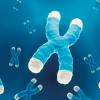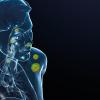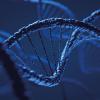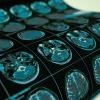A histopathology lab in Leeds is the first of its kind to go 100% digital. Here we mark the milestone, while Chloe Lockwood explains the workflow and Basharat Hussain unpicks some of the challenges that were overcome.
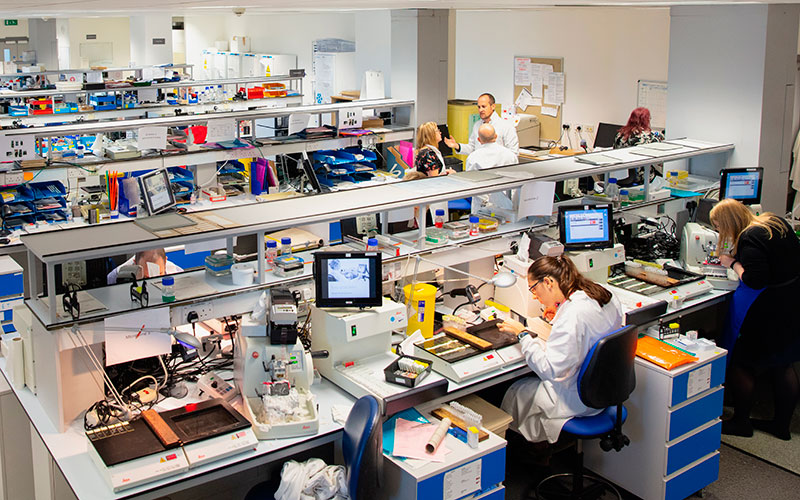
The UK has an ageing population. The median age rose by more than six years from 1974 to 2014, and by 2024 there are expected to be more people aged over 65 than under 15.
This means the number of people living with multiple conditions is on the up, as are A&E visits, waiting times and strain across all areas of the NHS.
With 70% of medical diagnoses based on work carried out by biomedical scientists, it was inevitable that build up would result in pressure exerted on pathology departments.
A recent Royal College of Pathologists (RCPath) report says pathology requests are increasing by nearly 5% every year. In September, the college revealed a workforce census shows that only 3% of NHS histopathology departments have enough staff to meet clinical demand.
“The cost of staff shortages across histopathology departments is high for both patients and for our health services. For patients, it means worrying delays in diagnosis and treatment,” says Professor Jo Martin, RCPath President. “Making sure pathology services can cope with current and future demand is essential
if we are to ensure early diagnosis and improve outcomes for patients,”
Among the report recommendations are “better IT for day-to-day work” and “capital investment to implement digital pathology more widely, so staff can work more efficiently and flexibly”.
It is against this backdrop that last month Leeds Teaching Hospitals NHS Trust and the University of Leeds announced a major milestone – a histopathology department that is now 100% digital.
The department, located in St James’ Hospital in Leeds, is one of the largest in the UK, processing over 1,000 pathology slides a day, and it is now digitally scanning every slide.
The step-by-step process that each slide goes through has been rigorously tested and received ISO15189 accreditation, laying the foundations for national guidelines on using digital pathology.
Dr Darren Treanor, Consultant Pathologist at Leeds Teaching Hospitals NHS Trust and University of Leeds, says: “The way we are digitising pathology services in Leeds enables us to produce the quality images pathologists need to diagnose patients quickly and safely. Going digital not only allows the pathologists to do their work on a computer, but it also unlocks the possibility of using the computer to help make the diagnosis, offering huge potential for the future.”
Traditional methods present challenges, including transportation of slides, storage, and sharing of information with other pathologists for a second opinion. But through digital pathology, these challenges can be side-stepped.
The technology is hoped to speed up and improve diagnosis and, in the future, may help to detect small areas of cancer that have spread to lymph nodes, improve quantify and rapidly direct pathologists to areas of abnormality in the tissue sample.
To date, 200,000 slides from patients at Leeds Hospitals have been digitally scanned using technology developed by its diagnostics partner Leica Biosystems.
In addition, there is an archive of 386,000 anonymised digital slides (the largest collection in the country) housed by the University of Leeds for research and teaching.
“Demand for pathology services will continue to increase, and digital pathology has the potential to improve workflow and pool resources across hospitals to help improve the patient experience,” says Basharat Hussain Programme Manager at Leeds Teaching Hospitals NHS Trust.
A digital slide is an image created by the complete digitisation of the glass slide at up to 200,000 dots per inch (DPI). If printed at a standard 300 DPI, the image would be the same size as a tennis court.
Chloe Lockwood
Biomedical Scientist Lead for Digital Pathology at Leeds Teaching Hospitals NHS Trust explains the move to digital pathology
Digital pathology unlocks major potential to transform laboratory services, and enhance the role of the biomedical scientist with the developments in AI. Most importantly, the digitising of the histopathology laboratory service has the potential to improve patient safety and reduce the time it takes for a patient to receive their result.
As part of the digital pathology project at Leeds, I had the role of Leadership and Management Fellow in Digital Pathology, and I have been the lead on implementing a full digital pathology workflow into the laboratory. There are many aspects to consider when going digital, but my main focuses were: laboratory workflow and efficiency, working with the laboratory staff before, during and after the implementation, and accreditation.
I have been fortunate to present my work at the Digital Pathology Congress in London and was awarded the Chief Scientific Officer’s Healthcare Science Rising Star award for the work I have done on the project.
A huge change
The laboratory is scanning around 1,000 slides a day, which equates to 250,000 slides every year. It’s important to recognise that going digital is a huge change management project, and isn’t easy. The key to implementing digital pathology is in the details, and it is the laboratory staff who will make it succeed or fail. It is vital that lab staff are involved at every step, and they should feel empowered and engaged to make the changes necessary to make implementation successful.
Digital pathology is also a fantastic tool, which can be used to train biomedical scientist staff in histological techniques, and demonstrate and explain process artefacts so they can enhance the quality of their work.
Scanning slides also gives biomedical science staff the opportunity to learn a new skill. As part of the project, I created a full training and competency programme, and, at present, we have 17 members of staff who are fully trained. The aim is to ensure every member of staff receives training in digital pathology.
Workflow
Digital pathology is a great way to establish collaborations and we are working with Leica Biosystems on the project. It is also a fantastic opportunity to work with other healthcare scientists in the trust. We worked closely with medical physics colleagues on choosing the appropriate monitors so that pathologists could make a confident diagnosis.
It is vital to work with colleagues in IT, as there are so many factors to consider that require their input, such as storage, infrastructure and integration. The option to share knowledge and expertise is invaluable.
Implementing digital pathology is a good opportunity to streamline the entire laboratory workflow to make it more efficient. Looking at the laboratory workflow from start to finish can identify areas that can be leaner, and eventually absorb the additional time and free up the resources required to scan slides. A good example is slide archiving and retrieval, and MDT preparation. Pathologists can have instant access to an image for an MDT, instead of waiting for the glass slide to be retrieved from file. This has a direct effect on lab staff who file slides, as their time can be used more efficiently for other tasks in the lab. It also has benefits for the multidisciplinary team meetings, and more time can be spent discussing individual patient’s needs just by transitioning from glass to digital.
Improving diagnosis
The most important aspect of all the work that has been done is patient safety and benefit. In September 2018, the Leeds histopathology laboratory gained ISO15189 accreditation, with digital pathology for primary diagnosis included – the first NHS laboratory of its kind. I prepared and submitted the evidence for the laboratory validation and verification of the laboratory workflow. Having accreditation is a way of assuring staff and patients that the services that are provided are safe.
With digitising glass comes the opportunity to automate processes. This can reduce the number of patient misidentification errors and avoid the limitations of glass and paper in terms of transport, storage, and management. Digital images are safely and securely stored and backed up, so that there is minimum risk of losing an image. It also means faster referrals and second opinions, and the time a patient is waiting to receive their result and deciding on next steps can be significantly reduced.
There is still a long way to go, but advancements such as AI are becoming more of a reality. AI could support pathologists to improve diagnosis, and it could also allow biomedical science staff to take a more active role in patient diagnosis by screening cases before allocating them to pathologists.
I am proud to be on this multidisciplinary journey and I hope I can inspire people to take their own; both for themselves and for the benefits it will ultimately have for patients.
Basharat Hussain
Programme Manager at Leeds Teaching Hospitals NHS Trust
Basharat looks at three key learnings from the transformation: location of the scanners, tracking/bar code system, looking at the long-term goals for the team.
Decide the best location for the scanners in the lab
When we embarked on this project, we visited other laboratories in Europe to learn from their experiences and to see how they implemented digital scanning. What was interesting was that most laboratories had a separate scanning room where the scanners were housed.
Bench space is often at a premium in pathology labs, but we felt that locating the scanners in a different room would not help our efficiency. In our view, every glass slide would have to travel further distance, delaying the process and increasing the risk of breaking or losing slides.
Working with the lab staff we did an options appraisal, considering 10 different options for where the scanners could be located, shortlisting them and then assessing the time required for each option. The outcome was that we wanted the scanners to be part of the lab and, together with the staff, we were able to find ways to create the space needed and make the scanners part of the laboratory environment. Once in place, we ran a competition with staff to find a way to name the scanners – the winner was Harry Potter characters – which helped to connect the technology to the human side of the lab process.
Implement a barcode system
The pilot we undertook for digital scanning involved 150 slides a day and we used a manual system to follow the slides progress and input information to match each slide to a patient. This worked for the pilot, but when we considered scaling this up to over a thousand slides a day it was not practical. The administrative burden of inputting that amount of information and risk of error made a manual approach impossible. Automation is crucial if you are to successfully scale the process.
A major part of the transformation, therefore, was to implement a barcode tracking system that is integrated into the reporting system and allows each slide to be followed through the pathology lab process with a single barcode, scanned at each stage of the process. This presented a significant IT challenge, as a number of pieces of equipment in the lab were controlled by standalone computers, which were not connected to the network and often running older operating systems. We had to upgrade various IT platforms and work with different suppliers involved in running the lab to accommodate this approach.
The benefits were significant – time is now saved by having a barcode added to each slide just once, and used throughout the process, and the chance of error is significantly reduced. It is also easier to identify where a patient’s slide is at any stage of the process, which is helpful when pathologists need to get their hands on a tissue sample urgently.
Help teams to understand the long-term benefit
Digitally scanning slides adds another stage to the pathology lab process – and, while it takes only two to four minutes to scan a slide, doing this at scale can add to the time a slide is in the lab. In addition, you are adding a new stage to a process that has existed with little change for many years.
The key is for the whole team to understand the long-term goal of digitally scanning slides. The benefits of digital pathology in improving the workflow for pathologists, being able to change slides and views at the touch of a mouse, rather than swapping glass slides in and out of a microscope, and the portable nature of the images means that time could be saved at the diagnosis stage when the images reach the pathologist.
We have six pathologists who diagnose digitally, for neurological and breast cancer. They report that using digital images reduces the time it takes them to assess the slide and make their diagnosis. Over the next few months we will be building confidence and validating pathologists in other specialities to diagnose digitally. This will give us the opportunity to assess the time taken for the end-to-end process, from tissue to diagnosis.
The journey to scanning every slide we produce has helped us to find more efficient ways of working and, while we have added another stage to the process, it is with the aim of unlocking the huge potential that digital scanning offers to the diagnosis of cancer. That is something we can all be proud of.
Digital pathology fast facts
- The file size of each digital slide is 1gb – about 300 times the size of the average photo you take on a smart phone.
- It takes up to four minutes (dependent on amount of tissue on slide) to scan a slide digitally to this level of resolution (40 times the size they are in real life).
- A Leica Biosystems Aperio AT2 scanner can scan 400 glass slides in one cycle and can work overnight to digitise the images.
- Over 1,000 slides are prepared and scanned in Leeds every day. This creates 1 terabyte of new data per day.
- If you were to lay all the glass slides produced in Leeds histopathology department in one month, end to end, it would stretch for a mile.
Image credit | Mearns and Pike

